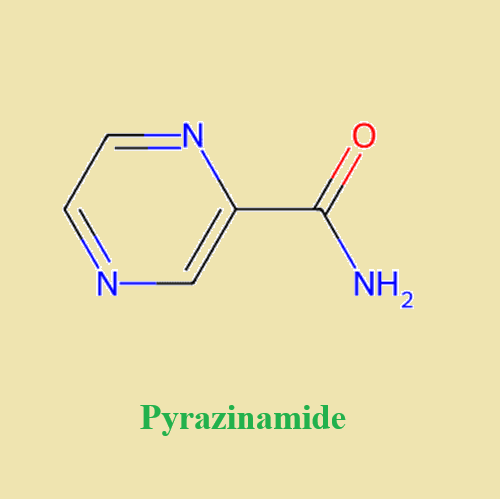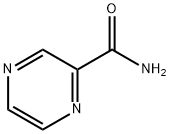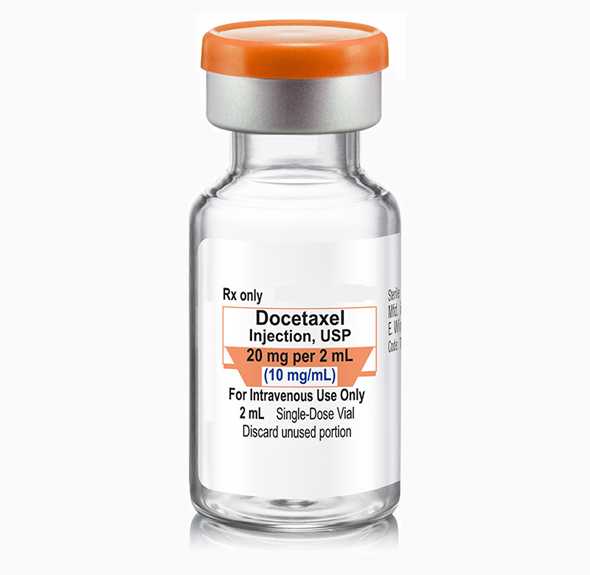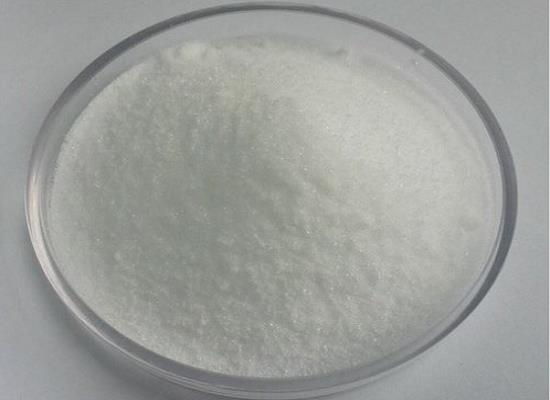Pyrazinamide: Indications, Mechanism of Action and Side Effects
Indications
Pyrazinamide is an oral anti-tuberculosis drug used as part of tuberculosis (TB) treatment. It can be used alone or in combination with rifampicin and isoniazid to treat TB infection. It can be used to treat TB in adults who are HIV-negative or exposed/infected, as well as in the treatment of paediatric TB.

Mechanism of Action
Pyrazinamide (PZA) is an antimycobacterial prodrug against Mycobacterium tuberculosis.PZA enters the bacillus by passive diffusion and is converted into POA (a medium-strength acid with a pKa of 2.9) by the pncA-encoded cytoplasmic PZ enzyme. Then, POA exits the cell by passive diffusion and an exocytosis mechanism that M. tuberculosis lacks. Once POA enters the outside of the cell, if the extracellular pH is acidic (e.g., pH 5.5), a small portion of the POA is converted to the uncharged protonated acid HPOA, which readily passes through the cell membrane. Acid-facilitated POA influx overcomes the weak deficiency in POA efflux, which leads to a long-term accumulation of POA in M. tuberculosis cells at an acidic pH. HPOA carries protons into the cell, which ultimately leads to cytoplasmic acidification, thereby inhibiting important enzymes. In addition, POA deenergises membranes by collapsing proton dynamics and affects membrane transport, inhibiting protein and RNA synthesis.
Notably, acidic pH not only allows POA to re-enter and accumulate in the bacilli, but also lowers the membrane potential and inhibits growth and metabolism required for drug action.The unique activity of PZA against Mycobacterium tuberculosis appears to be due to a defective POA efflux mechanism, which fails to counteract acidity-promoted POA influx, which may lead to an increased accumulation of POA, ultimately leading to cytoplasmic acidification and membrane dysfunction, inhibition of various targets and cell death, especially in non-growing hosts with low metabolism at acidic pH.

Side Effects
Common adverse reactions to Pyrazinamide include gastrointestinal reactions (discomfort, nausea, vomiting, and anorexia) and pain (arthralgia, myalgia). Other side effects that may occur are: fever, rash, pruritus, acne, photosensitivity, gout, dysuria, porphyria, thrombocytopenia and interstitial nephritis.
Related articles And Qustion
Lastest Price from Pyrazinamide manufacturers

US $1.00/KG2024-09-18
- CAS:
- 98-96-4
- Min. Order:
- 1KG
- Purity:
- 99%~101.0% ,BP2015
- Supply Ability:
- 5ton/month

US $15.00-10.00/KG2021-07-13
- CAS:
- 98-96-4
- Min. Order:
- 1KG
- Purity:
- 99%+ HPLC
- Supply Ability:
- Monthly supply of 1 ton



